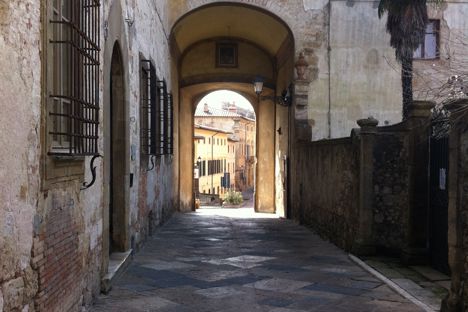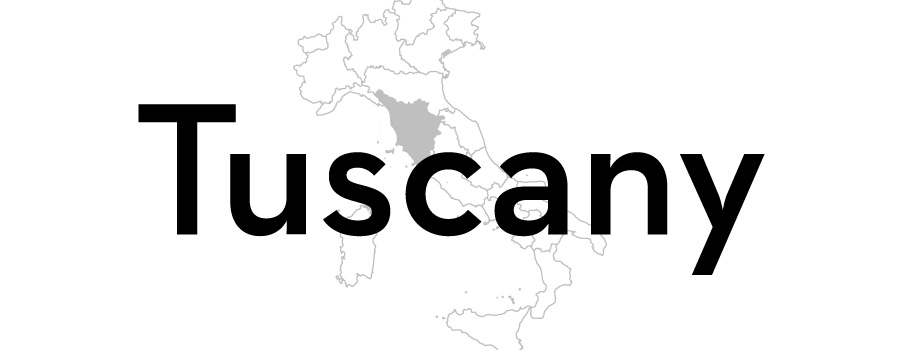
A visit to Tuscany and Gaetano Trovato - Arnolfo restaurant review
Tom Riby met chef Gaetano Travato during his visit to Tuscany and was lucky enough to be invited to lunch at his two Michelin-starred restaurant, Arnolfo.
I navigated my way through the old town of Colle di Val D’Elsa near Siena in Tuscany to find my chosen place for lunch, and as I jostled up the final hill in a small Fiat 500, with the road becoming increasingly narrow and the walls increasingly closer, I couldn't help but notice the rather steep drop down to the bottom of the hill with every turn...
Finally, there was a gap in the road and this beautiful view of a typical hill of Tuscany revealed itself and with it, the restaurant Arnolfo where I would be visiting the two Michelin-starred chef Gaetano Trovato for lunch.
Signor Gaetano Trovato invited me to lunch to showcase his Territory and Research menu that would allow me to understand the flavours, colours and techniques of high standard Tuscan cooking, which is often considered more of a rustic cuisine around the world.
Gaetano Trovato is one of Tuscany’s culinary masters. Born in Sicily on 25 January 1960, Gaetano was brought up in a large family. His mother Concetta was a housewife and loving cook while his father was a farmer. From an early age he was surrounded by fresh, organic produce and Mediterranean family recipes. When you ask him about this family connection with food, he will say: 'Love comes to good food'.
Family is also very important to Gaetano and he works with his brother Giovanni at Arnolfo, with Giovanni leading at the front of the restaurant and he was there to greet me as I puffed and panted after the rather adventurous journey to the top. I was greeted like family, as if I had just come back home for lunch.
We were sat in the peaceful dining room with a library of cookery books, bright art and a view of beautiful Tuscan hills outside the windows. We started right away, not with food but with a short catch up with Giovanni and Gaetano. 'Are you ready?' they said mischievously, but I had a good idea this was going to be a fun, educational and enjoyable lunch.
I was impressed with the amount of dishes on offer, with a team of eight in the kitchen, Gaetano was offering up to forty dishes across the various tasting menus; 'The Essence', 'Vegetarian', 'Territory and Research', and the á la carte, as well as his World Gourmet Society Festival 2015 menu, which looked delicious. However, staying on course I was keen to understand Gaetano’s influences and his version of Tuscan cooking with the 'Territory and Research' menu.
I’m going to tell you a little secret, Gaetano and his kitchen brigade love to use the first course, 'A welcome to the cuisine' (the appetisers), as a taste of things to come. Eventually these smaller dishes will evolve into larger dishes for future menus and I thought this was a beautiful way to work. Inspired by this, I helped myself to all three smaller dishes of lightly battered Gambero Rosso (red prawn) from the coast of Tuscany, Scallops with passion fruit and Tartare of Chianinia veal.
There it was! If I could summarise the culinary influences that I had read about with Gaetano’s cooking, it was staring back at me on these beautiful ceramic dishes. The fruit and fish flavours inspired by the Mediterranean and the hearty meat from Tuscany. Whatever could be next?
Moving on to the next course, which was Spelt from Garfagnana, Zolfini beans, red onion and black cabbage. For me, this dish was nostalgic of the tastes of the most delicious beans grown here in Tuscany called 'Fagioli'; they burst with natural, earthy flavours and make fine additions to any dish made with Tuscan meat.
Gaetano pops into the dining room again to meet all of his guests enjoying lunch that day. This is a proud chef who enjoys the company of others, and this serves to break down the walls of the familiar stuffy restaurants we have been used to at this calibre.
The following course was Chicken from Valdarno with smoked potatoes and truffle. Tuscan cooking is one of old traditions, with Florence being the first place in the world to use a fork (a hundred years before France). Chicken has always been an important meat in Tuscany, even going back as far as the Roman Empire. The Valdarno chicken breed dates back to 1848 and continues as the same breed today. It has a highly regarded taste and demonstrates Gaetano’s careful sourcing of his food locally.
For me, the dishes had a distinct colour palate. It reminded me of my journey to the restaurant, the rich browns and bright greens with added excitement and entertainment. They represented not just the food of Tuscany, but the landscape. Gaetano creates every dish on a clear see-through surface and considers his dishes as pieces of art, which clearly shows in the final plating. He mentioned he would show me his art book after lunch, as he tends to draw and sketch new dishes in the restaurant's small living room space in his spare time.
The next dish on the menu was a traditional dish with a rich sense of nostalgia, Tortelli with Cinta Senese, leeks, asparagus and liquorice. This dish hold memories conjured up by the farm of Gaetano's father, with the classic tastes of root vegetables and humble fresh pasta completed with Cinta Senese (a breed of pig from Siena with a rather long nose).
As we arrived at the end of the menu, I was presented with Chianina veal, cheek, chickpeas and shallots served with an expression of art as if it were the artists last painting, signed off in style. This incredible journey through Tuscan cuisine was finished with a dessert of Zuccotto and coffee sabyon.
Shortly after lunch I sat down with Gaetano and his brother Giovanni to talk about their history, cooking influences and most memorable dishes. I won’t give away too much now but my favourite part of the conversation was their most memorable dishes when they were younger. While Giovanni remembers stealing unripe fruits and nuts from the garden (such as the still green young almonds of the region), Gaetano remembers his father’s passion for rabbit and the family meals which were served in huge quantities on a large table in the sun, with no plates and just cutlery with which to dive in.
I'm really looking forward to seeing what else Gaetano will be creating for Great Italian Chefs and I encourage you to visit the old town of Colle di Val d’Elsa for your own experience of this fantastic Tuscan cooking.



